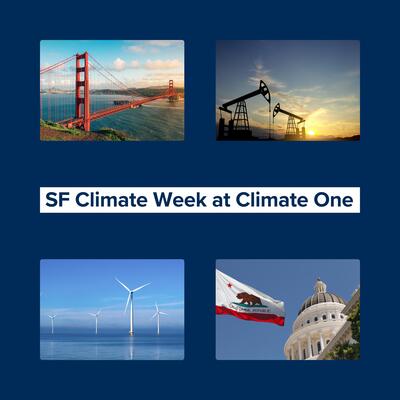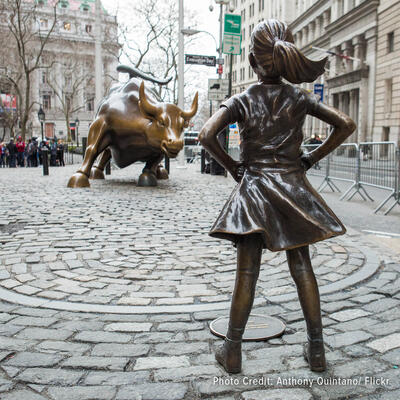
Investing in a Clean and Equitable Recovery
Guests
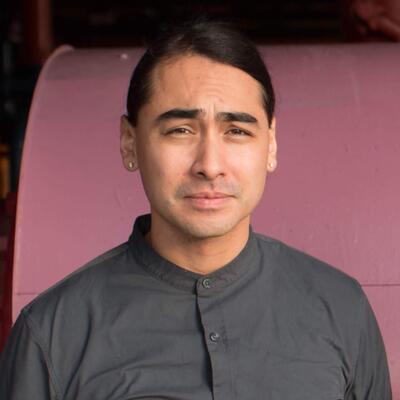
Julian Brave NoiseCat
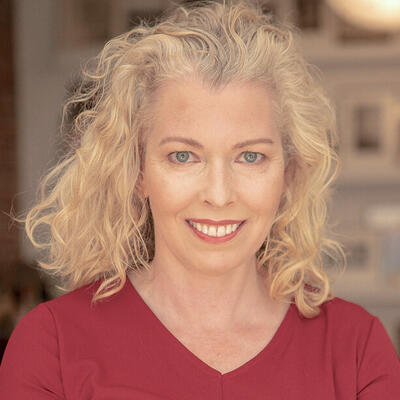
Julie Pullen
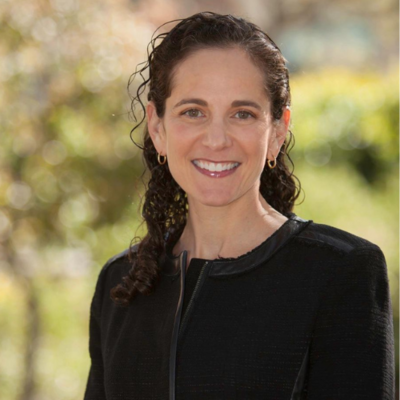
Alicia Seiger
Summary
The Biden Administration’s COVID recovery plans promise to prioritize climate and equity alongside economic growth. The shutdowns brought on by the pandemic hit women and minorities hardest: four times as many women as men dropped out of the workforce in September 2020, with Latina and Black women seeing the highest levels of unemployment.
“70% to 90% of frontline workers are women relative to 50% of women in the workforce,” notes Julie Pullen, Director of Product at Jupiter Intelligence and a fierce advocate for feminine leadership on climate, “so the differentials are substantial and magnified in a pandemic.”
The struggles of many women to juggle professional and personal responsibilities during COVID has brought the need for a recovery that specifically supports women and members of Black, Indigenous, and communities of color into stark relief.
“We got to where we are now on climate through a history of white supremacy, extraction, exploitation,” says Alicia Seiger, Managing Director of the Sustainable Finance Initiative at Stanford University’s Precourt Institute for Energy, “and that requires a path forward built on new systems and with new representation.”
The $1.9 trillion American Rescue Plan recently passed by Congress includes $5 billion for Indian health services and $750 million in housing assistance for tribes and native Hawaiians, making it the largest public investment in native communities in United States history.
“[It’s] obviously incredibly encouraging,” says Julian Brave NoiseCat, Vice President of Policy and Strategy of Data for Progress and a citizen of the Secwepemc Nation in British Columbia, though he also cautions that many native people and communities “are digging themselves out of a very, very deep hole that was created quite purposefully through policy decisions made not just over the last four years or the last year but over 220 years.”
This program is generously underwritten by Bank of the West.
Related Links:
The American Rescue Plan
Data for Progress
Jupiter Intelligence
Precourt Institute for Energy
The All We Can Save Project
Waterfront Alliance
Full Transcript
Greg Dalton: This is Climate One. I’m Greg Dalton. [pause] The Biden Administration’s COVID recovery plans promise to prioritize climate and equity alongside economic growth.
Julie Pullen: 700 billion for climate resilience across our power, water, road systems, buildings, I mean that’s massive, it’s massive investment.
Greg Dalton: That investment is needed to ensure a clean and just recovery.
Julian Brave NoiseCat: Just the climate spending in the American jobs plan would be more than the entire American Recovery and Reinvestment Act of 2009, right.
Greg Dalton: But a strong policy response isn’t enough on its own.
Alicia Seiger: We got to where we are now on climate through a history of white supremacy, extraction, exploitation, and that requires a path forward built on new systems and with new representation.
Greg Dalton: Investing in a Clean and Equitable Recovery. Up next on Climate One.
---
Greg Dalton: How will climate and equity be built into America's economic recovery? Climate One conversations feature all aspects of the climate emergency: the individual and the systemic, the exciting and the scary, people who are in power and people who are disempowered. I’m Greg Dalton.
Greg Dalton: The COVID-19 shutdown has hit women and minorities hardest, with Latina and Black women in low paying jobs like housekeeping seeing the highest levels of unemployment.
Julie Pullen: 70% to 90% of frontline workers are women relative to 50% of women in the workforce. So I mean the differentials are substantial and magnified in a pandemic.
Greg Dalton: Dr. Julie Pullen is Director of Product with Jupiter intelligence, a startup delivering neighborhood scale projections of weather, water and climate impacts. She's also an adjunct research Scientist at Columbia University's Earth Institute, and a fierce advocate for feminine leadership on climate.
Alicia Seiger: I still remember in the first two weeks of shelter in place putting an out of office, you know, response on my email saying I am now in addition to my day job I've been promoted to an elementary schoolteacher, a chef, a housekeeper, yard duty, a therapist.
Greg Dalton: Alicia Seiger is Managing Director of the sustainable finance initiative at Stanford University, and a lecturer at Stanford Law School. Her struggle to juggle professional and personal responsibilities during COVID highlights the need for a recovery that specifically supports women and members of Black, Indigenous, and communities of color.
Julian Brave NoiseCat: I am a citizen of the Secwepemc Nation from what is now British Columbia, Canada. I'm also descendent of the Lil’wat Nation of Mt. Currie also in Canada.
Greg Dalton: Julian Brave NoiseCat is Vice President of Policy and Strategy at the think tank Data for Progress, and writes for many organizations including Canada's National Observer. His experience learning his grandmother’s native language, spoken only by about 200 people, has strongly informed his work on loss in the face of climate disruption.
Julian Brave NoiseCat: I think that at its core, climate change is in part the loss of a climate and atmosphere and world that supported civilization and human society as we know it, and in that sense, does pose an existential threat to the world that we inherited from our ancestors and parents and prior generations, and we are now, breaking from that, in the process of breaking from that, and for some people in communities, this is not the first existential threat that we have faced, and in particular here in North America, if we're talking about instances of apocalyptic breaks for what came before, we have to acknowledge the genocide and that of the majority of an entire continent from first peoples here, and I think that the trauma that that causes, the loss of cultures and ways of life that go along with that are still present in the community that I come from. The people that I come from, but that at the same time, and more hopefully, I think people are remarkably resilient and try to create the continuities of culture and in this case, language and love for community and each other that come along with those things in the face of those challenges in the face of those existential and otherwise apocalyptic circumstances, and I think culturally and from a humanities and philosophical perspective, I think that those stories and experiences can be sources of strengths as we think about Big challenging issues like climate change today. Yeah, stories could explain. They can heal. All sorts of things.
Greg Dalton: Julie Pullen, your climate concern went to a deeper personal level when you were a professor in the Philippines, witnessing the devastation that burning fossil fuels is bringing now to that nation, how did that impact you and how did it change your career focus?
Julie Pullen: Yeah, prior to that experience that you reference, I had been a professor of engineering at an engineering school, and my focus had been on how the realms of the ocean, the atmosphere and the river systems are linked together and simulating those linkages in order to be able to do a better job at predicting, I went to the Philippines in 2018 as a Fulbright visiting professor on sabbatical, and I was with the University of the Philippines and teaching tropical meteorology and saw firsthand the impacts of typhoons on my field site in the north of the main island of Luzon, and it's this beautiful stretch of coastline where the river joins the mountains and the ocean, and it was heartbreaking to see the impact of climate change directly on the landscape and on the people that I have come to love so much as a consequence that really galvanized and catalyzed me to do much more around climb and sharp and my focus on climate in my work. I came back to the United States, I joined Jupiter intelligence, a climate risk analytics startup in order to help businesses and other entities develop much more precise notions, quantitative notions of their exposure to climate change to help catalyze them to do more in advance of this really urgent climate crisis that we are in.
Greg Dalton: Alicia Seiger, your climate awakening began reading Al Gore's seminal book, Earth in the balance, and his articulation of the need and narrative was compelling, but distance from you personally. When did climate become personable? Personal and actionable for you.
Alicia Seiger: Yeah, that was my entree. It was not something I ordered, it was actually something I read as part of a required course, but it really started my transfixion with this question of how to harmonize human and ecological systems and tying back to Julian's comments while still in college, I actually for my senior thesis, wrote a study of intellectual property rights as a means to preserve cultural and biological diversity for indigenous communities, and so I had this understanding and appreciation at the time of other ways of living that were more in harmony with nature, but I felt my skills and interests were really more in the business community, and so I started from this intersection of humans in the environment to business in the environment was really captivated first actually by Anita Roddick and the work she did with the body shop is the first example of this business as a force for good. And as time went on, that intersection evolved from humans in the environment, business in the environment, to capital in the environment, to going all the way up to the supply chain to understand how capital flows through our economic systems and what the implications of those capital flows are. For ecological systems and for climate change, and so I've been at this for three decades now, but it's really been in the last five years, I would say, where these problems that had seemed like something we should be anticipating and be planning for really hit home. And I think for me, that's been the fire seasons, I live in the Bay Area too, and starting in the summer, but running through the fall, there's a sense of eerie anticipation. I'm actually up here in wine country now with my family and it's such a peaceful and beautiful and tranquil setting, but there's a new sense now of concern and of anticipation for what the increased heat and drought and wind events do to a place like this. So the urgency around these challenges has come much faster and sooner in my professional life than I had anticipated,
Greg Dalton: And fires are interesting because that's one area where Julian indigenous cultures have been looked to as, Hey, that you might have some solutions, so that's at least for me, having done this for the last 14 years, the one instance where a white dominant culture looks to indigenous cultures and say, Hey, you've been managing you... Indigenous cultures have been having cool burns and controlled fires, whatever the name is, to manage for us in a different way than Smoky the Bear. Tell us a little bit about how that might contribute to the larger conversation about dealing with climate.
Julian Brave NoiseCat: Yeah, so I think fire management is a really interesting one because there's a long history of Indigenous peoples, including in California, using controlled burns to prevent large-scale wildfires to regenerate habitats, promote biodiversity, etcetera. There's also actually really fascinating ways in which controlled burns in particular habitats helped foster some of the not just plants and foods and animals that people hunt and gather from to provide sustenance, but also create good materials for basket making and things like that. And this is not just particular to controlled burns and fire management, but if you look at the way that the United States and Canada have come to manage the fisheries, particularly in the Pacific Northwest, there's actually a lot of practices that have come to mirror prior indigenous forms of fisheries management in those places, and then more broadly, still to this day, about 80% of the world's biodiversity is found in indigenous lands and territories, and it's just logic says that if you want to preserve that biodiversity, and there's also lots of studies that suggest this as well, giving indigenous peoples title to their lands and also pursuing conservation strategies that empower indigenous peoples as environmental stewards and managers can be very effective. In fact, the Canadian government, we talked about Canada low earlier, is gonna invest more in just that sort of a thing, through its Guardian Watchman Program when it releases its fiscal year 2021 budget later in April. So these are real solutions, and I think what's really interesting about that is that we in, especially in this country, the United States, we don't imagine indigenous peoples as living in the present, let alone having solutions for the challenges of the 21st century, that is a very radical re-conception in the American imagination of our people. And I think that that's a very exciting thing, and I was truthfully, a little disappointed that there wasn't more of a nod to that actually in the President's American jobs plan, which included some stuff on resilience and conservation, but did not include any explicit reference to these sorts of efforts.
Greg Dalton: Though, I have been hearing him say states, tribes and territories in a way that I haven't heard that really my year picked up when I hear that phrase, states, tribes and territories, that's a new phrasing. We certainly haven't heard in the last few years, Alicia, sir, you have always approached climate from the view of carbon math and not underlying issues of equity and justice, how has America's racial reckoning and covid changed the way you think about climate?
Alicia Seiger: Such a good question. I used to take pride in the climate pragmatism approach of, This is really all about just getting emissions reductions on the ground, and if we can just be laser focused on that challenge, we'll get there faster, and I have gone through a personal journey that I think mimics the larger climate conversation, which is around a real appreciation and understanding at a much more fundamental level of the intersections between racial justice and climate change and what climate justice really means, and I have much more to learn and to understand, but we got to where we are now in climate through a history of white supremacy, extraction, exploitation, and that requires remedy, and it requires a path forward that is built on new systems and with new representation, and that the solutions to climate expand far beyond simple carbon math. They require really changing the facts on the ground to change people's lives and livelihoods, to build the momentum and the political will to fundamentally change our economic systems. And I also have come to more deeply appreciate, although this has been a through line of my career, that climate at the end of the day is a leadership crisis, and in particular crisis of empathetic leadership, and so having more diverse voices at the table, having representation from women and people of color in leadership positions making decisions will lead to more equitable outcomes and new ways of thinking and doing that we haven't seen in the past and we desperately need for the road ahead. So it is. I had at times, particularly in my early career in the carbon markets, where I would be focused very much on the emissions reduction is not on the ancillary benefits, thinking the big tent was making things harder. Have really come to appreciate that the big tent is the way forward, both in terms of leadership and in terms of expanding the solution set, so that's been a personal journey and I think a sector journey.
---
Greg Dalton: You’re listening to a Climate One conversation about a clean and equitable recovery. Coming up, addressing historical inequities and their present-day consequences.
Julian Brave NoiseCat: There were households without running water where you couldn’t do something as simple as you know, wash your hands in the United States of America, you know, living in a place where you cannot wash your hands or live with electricity.
Greg Dalton: That’s up next, when Climate One continues.
---
Greg Dalton: This is Climate One. I’m Greg Dalton, and we’re talking about investing in a clean and equitable recovery with Julian Brave NoiseCat, Vice President of Policy and Strategy at the think tank Data For Progress; Dr. Julie Pullen, Director of Product with Jupiter Intelligence; and Alicia Seiger, Managing Director of the Sustainable Finance Initiative at Stanford University. [pause]
Between 2014 and 2019, the annual growth rate of women-owned firms was more than double that of all businesses, and revenues rose to about $2 trillion, according to a study by American Express. But the COVID shutdown hit women disproportionately, especially women of color, and laid bare the gender and racial dynamics in this country, as Alicia Seiger explains.
Alicia Seiger: I still remember in the first two weeks of shelter in place putting an out of office, you know, response on my email saying I am now in addition to my day job I've been promoted to an elementary schoolteacher, a chef, a housekeeper, a yard duty, a therapist. And I couldn't see how I could work and maintain what was needed at home. And somehow a year later I'm doing all those things and busier than I've ever been at work and that's thanks to support that I have because I have a partner, I have a husband I have a nanny who is now back. I have resources that I can put to work to help support me. I think, you know, most women and working families don't have that kind of support. And so, the challenge and the juggling act that we always were doing as mothers and women in the workforce has just come into sharp refrain with the absence of the supporting structures that we've come to rely on. And so, I think you're seeing and I've seen this with my colleagues particularly in academia where there is sort of there was a split in the road almost and there were people who saw this opportunity. Oh my gosh, all I’m doing is sitting at home and working I can do so much now, I don't have all these other distractions. And then other women in particular who were now juggling so much more. So, I think that's a challenge that always existed that COVID laid bare and requires the kinds of rethinking of our systems that are akin to climate. I mean in this case; it's you know thinking about caregiving as a valuable contributor and role in economic recovery and livelihoods. And I think we need to be focused on the support systems that women and mothers need to be able to balance their work and family.
Greg Dalton: Julie Pullen, one year after COVID hit the percentage of women in the workforce hit a 30-year low in about 56% of American women in the workforce. As someone who works on financially empowering women, what should be done to help women rebound from COVID in an economy that's grappling with climate
Julie Pullen: Yeah. And to echo Alicia's comments about the differential impacts on women that childcare and family care piece Bank of the West has a tribute on their page of means and matters that pulls out some numbers around that. That’s 20 hours a week more than their male counterparts doing family and child care work and 70% to 90% of frontline workers are women relative to 50% of women in the workforce. So, I mean the differentials are substantial and magnified in a pandemic. And I think there's a lot of reason for optimism around all of the federal investment plans related to lifting up different sectors. And I think that retraining I think that really providing these sorts of incentives for companies to hire more women and to think about how to broaden their hiring practices and incorporating between them are some strategies that could work. I, on a personal level, as you cited, I think it's really important to be investing in women and people of color led and owned businesses. And I think that we’re seeing a broader shift particularly around ESG investing and looking at the impact of government on having women leaders at the table and the positive benefits to decision-making overall. So, I think all of these are just like waves that are cresting and we’re gonna see the benefits of these more broadly throughout the economy.
Greg Dalton: ESG being environmental, social and governance. The idea of having social considerations when investing as well as financial. Julian Brave NoiseCat, the $1.9 trillion American rescue plan recently passed by Congress includes $5 billion for Indian health services, 750 million in housing assistance for tribes and native Hawaiians. How do you evaluate that package in terms of a just recovery addressing some of the harms of the past that you mentioned at the outset?
Julian Brave NoiseCat: Yes, so the American Rescue Plan if I recall had 32 billion total for native communities. So, that's if you include Indian country, as well as native Hawaiians and Alaska natives which made it the largest public investment in native communities in United States history. Which, you know, I think is obviously incredibly encouraging in many instances’ tribes were some of the hardest impacted communities, not just in the United States but among the hardest impacted communities on the planet during this pandemic. The Navajo Nation for example, at one point had more coronavirus cases per capita than the Hubei province in China where the pandemic originated. And just to put that in perspective, the Navajo Nation has a population density just slightly higher than that of Siberia. And you know a huge reason for that is things like as you brought up Indian health service, you know, the Indian health service is funded the last time I checked, which was before Biden passed this bill, which is important but was funded at about $4000 per patient. And if you compare that to other federal health care programs like Medicare, or I think it’s Medicaid actually, it's about $13,000 per patient. So, essentially our spending on healthcare for native people is less than a third of what it is for other Americans. And that has real consequences, you know, that looks like fewer hospital beds per capita on the Navajo Nation than in places like New York City, that meant insufficient amounts of respirators and other essential equipment and PPE on the Navajo Nation. And that looked like, you know, immense tragedy for people that meant more people getting sick more people dying. And on very basic levels, you know, there were households without running water where you couldn’t do something as simple as you know, wash your hands. So, you know, I think that the American Rescue Plan obviously very encouraging you know, with all of these things, and in particular with policies that have to do with Indian country. The implementation is also just as important as the appropriations and authorization, you know, and the handoff between the federal government and tribes. Historically, there was a lot of corruption on the side of the federal government and you know it's never been particularly easy for tribes who tend to be understaffed and under resourced as I just mentioned to be able to access all the funding that’s made available for them. In the early days of the pandemic there were crazy things happening like tribes having to you know write grant applications to access some of the funding that Congress appropriated for them. And you know I'm hopeful that those problems are being ironed out and that native people and communities will benefit from this massive investment. But I think we need to keep in mind that, you know, in Indian country many people and communities are digging themselves out of a very, very deep hole that was, you know, created quite purposefully through policy decisions made not just over, you know, the last four years or the last year but over 220 years.
Greg Dalton: We’re talking about a clean and equitable recovery from COVID and thinking about a climate smart economy with Julian Brave NoiseCat, Vice President of Policy and Strategy at the think tank Data for Progress. Dr. Julie Pullen, Dir. of Product at Jupiter Intelligence, a startup delivering neighborhood scale projections of weather, water and climate impacts. And Alicia Seiger, Managing Director of sustainable finance initiative at Stanford University. As we're recording, Present Biden is unveiling a $2 trillion plan to rebuild the country's aging roads and bridges. Julian Brave NoiseCat, there's also another proposal recently, you know, this is just a proposal a bill from Sen. Ed Markey and Representative Debbie Dingell of Michigan for a $10 trillion spending plan over the next aid focused on infrastructure and climate. Alicia Seiger, how do you think markets would react to a $10 trillion or even a $2 trillion-dollar climate and infrastructure plan as the person kind of thinking about financial markets here, is that a welcome?
Alicia Seiger: Sure. Puts lot of tailwind into interests that investors have already expressed around net zero investment portfolios and net-zero asset managers commitments. And so, spent well that money can be starting to initiate the transition across multiple sectors of the economy. And I've just been sorting through the details this morning too. But it’s as comprehensive as one would hope, in terms of the electric power sector transportation, housing stock, etc. I think the risk is that that is could end up being another example of this kind of disconnect where the financial system looks green but the real economy is still very dirty and unsustainable. And so, the challenge in marrying the government expenditures and support with the investment community is doing it in such a way that you’re not just moving capital around making money you're doing it in such a way that you are actually putting real heft behind the energy transition getting capital where it needs to flow to reduce the cost of many of these technologies as Gates talks about the green premium of many of these technologies. So, it's not just the capital it’s the alignment of that capital with the policy instead of incentives that help it flow in the direction and speed and scale that we need to decarbonize.
Greg Dalton: Right. There’s a scenario where Goldman Sachs makes lots of money off a climate volatility and the people who are wealthy get even wealthier because they’re kind of, off the volatility that climate is bringing to us. Julie Pullen, as a scientist who knows about the societal disruption already baked into the climate system. Do you ever think we’re just rearranging the chairs on the Titanic is all this money gonna really make a difference?
Julie Pullen: That’s a key part of where climate action comes in. I think it's you know it's everything. Its attention on climate risk what’s the exposure taking action on that front it's taking action on the climate solutions and policy perspective. It's the spending on infrastructure which if you look at the amount 700 billion for climate resilience across our power, water, road systems, buildings, I mean that’s massive it’s massive investment in making our infrastructure more resilient. And so, I do think it's one of those cases where really you know everything here and the potentially synergistically if you look at them altogether, these have the potential be really transformative again subject to the implementation.
Greg Dalton: So, as working for a company that that does really like block level neighborhood level kinds of forecasts. What are the areas that are really at risk, and if someone's going to try to move to a climate safe place where should they move to, Julie Pullen?
Julie Pullen: You know, I think it varies across the country of course. And you have to think not just across one particular peril like flood, but you have to also think about the heat waves and the intense precipitation events that we're experiencing. Places like Madison, Wisconsin where my dad lives, I mean they’ve seen unprecedented flooding and that’s nowhere near the coast. And so, these experiences are going to be increasing in the future and it's really the aggregator, the combination of all the perils, which is what we focus on in quantifying range of different possible exposures. And of course, then there's like a there’s a community level imprints on this too because you have like different parts of New York, New Jersey, region is proceeding at different phases in their investments in climate resilience. And one of the things we do at the Waterfront Alliance is advocate for equalizing those investments and making sure they are directed at these underserved communities as well. And so, I think it is again, once again the combination of the, you know, looking at the climate risk but also building the climate resilience into the mix right where you live now and advocating for that.
Greg Dalton: Right. Because all the financial incentives will be to protect the highest property values which are the wealthiest neighborhoods. We have a market fundamentalism in this country that was significantly created and promoted over the past five decades or so by conservative philanthropists who funded research of think tanks and elite universities. Consequently, a large group of Americans think markets are more effective than government in solving many big problems. Alicia Seiger, will market solve climate change?
Alicia Seiger: No. And I’ve spent the last several decades trying to make it be so. I think there are great market-based solutions to climate and I've spent a lot of my career building them and pursuing them. And I think there's a tremendous opportunity market opportunity for wealth creation in this transition. And I think there's a lot that markets can do to align capital, where, as people start to wake up to the realization and to the understanding that we are fundamentally altering our physical systems and that there are risks embedded in our investment portfolios and in our decision-making that are not part of our models. There will be, and you're already seeing this, a tectonic shift in how capital is invested and how portfolios are managed. That said, to meet the timetables that are required that scientists have very clearly laid out for where we need to be in terms of our emissions trajectories, and how essential it is to avoid some of the, you know, very scary negative feedback that we could unintentionally trip ourselves into. We need policy to align incentives to set the roadmaps to accelerate this transition. And so, markets could get us there eventually, but the timetables and the science don't permit that kind of laissez-faire. We really do need the policy piece to be core and fundamental to get markets to move in the right direction and then markets can be a magical tool.
Julian Brave NoiseCat: Just adding on to Alicia’s point, you know, Pew did a survey very recently that showed that demand for more liberal form of government with the strong hand and public sector was at a, you know, more than half-century high. The last time it was at this level was in the late 60s. And you know, just like empirically all the economic modeling and energy system modeling suggests that you know absent government intervention we’re just not gonna make the kinds of policy changes that we need. So, for example, the base case for when we get over 50% of new vehicles being sold being electric absent any sort of government intervention into that market is somewhere around 2050, right which is just far too slow for us to get over 50% of new cars being sold being electric vehicles. And so, you know, I think that people fundamentally understand these sorts of things. I think that the need for strong public policy responses to this pandemic has reinforced I think the value of policy and good government to a large segment of the voting public obviously not all of it. But I think that that was a big part of you know why Democrats, you know, won not just the presidency but also the Senate, which was you know an unlikely occurrence in the 2020 election. And I think that it's great that that view is starting to you know come back to life not just among sort of the policy decision-makers who decide how the president and the Congress are going to respond to these challenges, but also that it is, you know, picking up cachet among a larger segment of the public. I think that that gives me hope because I think that it's fundamentally the correct view on how to run a society.
---
Greg Dalton: You're listening to a conversation about investing in a clean and equitable recovery. This is Climate One. Coming up, building community around climate solutions.
Julie Pullen: I think it’s really helped a lot of us focus on doing that in our own ways and in our own lives. That really sort of central and important role of community in all of this.
Greg Dalton: That’s up next, when Climate One continues.
---
Greg Dalton: This is Climate One. I’m Greg Dalton. We’re discussing an inclusive and just economic recovery from COVID preparing for the clean energy economy and climate change with Julian Brave NoiseCat, Vice President of Policy and Strategy at the think tank Data For Progress; Alicia Seiger, Managing Director of the Sustainable Finance Initiative at Stanford University; and Dr. Jrulie Pullen, Director of Product with Jupiter Intelligence.
All We Can Save is a collection of essays about women leading on climate. We discussed it at length in our episode “The Feminist Climate Renaissance.” It also brought Alicia Seigers to tears.
Alicia Seiger: Oh, I love that book. Thinking about back to the Earth in the Balance it captured my imagination or more sort of my mind. But All We Can Save just held my heart in a way that I just know a climate book has ever done before. And I have felt, I have collected an incredible tribe of women through my career and I thought I knew a lot of their most of the you know climate women leaders. And that book there were some that I knew in that book, but it just introduced me to a whole new collection of women climate leaders. And I felt so joyful and optimistic and encouraged in reading that book and I listen to it which I really loved. And I remember just being on a trail run and feeling so much emotion running to the trails listening to these incredibly brilliant and powerful women voices. And I think I was really struck by why trying to think about why and it's about making change instead of being in charge. It's not about the ego and taking credit this idea of healing injustices rather than deepening them. We talked a little bit about the heart centered versus head centered. I think you have to have both in this field, but you have to have both you can't just be thinking with your head and really building community. And All We Can Save to me really just propped up this community of women climate leaders through beautiful storytelling that ranged from very scientific and head centered analysis, but all with the heart and a connectivity in community that was woven throughout. And then also introduced other conversations and questions around, you know, whether it was hearing from women from the indigenous community hearing from ecologists who are thinking about, you know, how our, a fauna is all connected in ways that actually wasn't Al Gore who invented the Internet it was fungi, it was mushrooms. You know, the original dispersion of information through the forest. So, it was real I think watershed moment for me and I think I imagine all of the young men and women who collected those stories who will be similarly charged in the way I was, you know, when I first read Earth in the Balance. But charged in a way that has these values at the core that I think will spawn the next chapter of climate warriors that will have the kinds of skills and experiences and networks that we need to make this kind of progress we’re gonna need to make in this next decade.
Greg Dalton: Julie Pullen.
Julie Pullen: Now, I am so thrilled you mentioned that book. It’s actually in my bookshelf behind me, you can’t see it but really, what an incredible contribution of the climate community. Ayana Johnson who’s one of the editors is a friend of mine fellow oceanographer and she is an ocean policy superstar. And she could be, you know, doing all kinds of things with her time and every time I see her, her message which she articulates in which she’d live is building community around climate solutions. And it's like that's where it’s at. And I think it’s really helped a lot of us focus on doing that in our own ways and in our own lives. That really sort of central and important role of community in all of this.
Greg Dalton: Julian NoiseCat, I’d like to hear your thoughts on building community around solutions and what you just heard. Because I tend to think about indigenous cultures being more community-oriented, less individual items?
Julian Brave NoiseCat: Yeah, I mean I think that in the sort of climate solutions conversation right we talk a lot about physical infrastructure. We talk a lot about regulations. We talk a lot about price signals and incentives. And I think one of the things that I often sort of think about is what are the sort of forms of human resilience and community that you know play as important if not more important role in fortifying communities against disaster and against immense challenges you know as like a seawall or things like that. What are the elements of our culture what are the elements of social relationships that can make us you know, just sort of stronger as people and as people who share community in space and country with each other? And one thing that makes me very nervous is that if you look at sort of longitudinal polling on questions like whether people trust their neighbors and questions related to social trust. What you'll find is that over you know, not just a few years but over a long period of time the number of people who will respond to the survey and say that they trust their neighbors has been fundamentally going down over a long period of time. And it’s not just going down in our country it’s going down, you know, across many different countries and societies where we’re asking the similar question. And you know I think that that slow creep of inhumanity and distrust for our fellow people is a really pernicious and scary thing. And I think that one of the most important and simple climate solutions is probably just compassion and love, right. The commitment to creating that sense of shared interest and solidarity between people. And I think that there are very particular projects in this country that are oriented towards creating more of that and I think that they're very clear projects in this country that are oriented towards undermining that.
Greg Dalton: Reminds me of a book I think it was Deep Economy that Bill McKibben wrote. One of the major achievements of the American economy of the recent decades is building bigger houses further apart from each other so we don't, you know, we’re further from our neighbors, if you happen to be privileged to own one of those houses. But there’s sort of more material wealth and more distance and separation. To the point earlier about where should we go where is the safe place. I remember one person said to me the best thing you can do about climate change is have neighbors who care about you, right, when the bad things come you can try to have all this hardware or gear, or you can have neighbors who care and you care about them, and they’ll come. Picking up the thread of feminine leadership, Alicia, I wanna ask you about one other personal sort of story talk about bringing the whole self and integrating the head and the heart. In 2015 you went to see a talk by Larry Fink, CEO of BlackRock, the largest investment manager in the country. He was a self-proclaimed environmentalist and at this talk in 2015 he was asked what keeps him up at night. What was his answer?
Alicia Seiger: Yeah. He gave an answer about farmers in Southeast Asia losing their livelihoods through transformational technology. And it was a conference on investing in environmental markets. And so, there were folks in the room who are thinking about the intersection of capital markets and the environment. And I think most people in that moment were having the same thought I had which is that sounds like climate risk you know in a different form rather than a technology intervention it's drought, it's heat, it's name your physical climate impact. And so, someone raise their hand immediately afterwards and said, well, that's interesting have you thought about climate risk? And he quite honestly and candidly said, no, I've never thought about it. And you could hear a pin drop in that room. And afterwards there's a long line of people waiting to talk to him to help him think about climate risk. And to his credit, within a year, less than a year of that talk, BlackRock released its first report on climate risk and investment portfolios. And, you know, BlackRock takes a lot of flak from the left and I think for fair reason, but I do believe at the core there is an understanding and awakening and I think it's that bringing the two selves together for someone like Larry Fink who was a self-proclaimed and ardent environmentalists who would just never really thought about the intersections of that part of his life with his day job of investing. And I think now there's no one in a CIO position that has at least had to answer that question and who now for the most part hasn’t internalized how core that intersection is to their decision-making.
Greg Dalton: Yeah, that compartmentalization speaks so much about how we can compartmentalize things and people do in their day jobs. And then there are kind of weekend environmentalists. Julian Brave NoiseCat, you've written about how Native Americans are portrayed in Hollywood and how that affects the ability of people to tell their own story. Connect that to the story of Deb Haaland the first Native American to be U.S. Secretary of the Interior, a major milestone. How do you see the way she's been portrayed as an indigenous woman making a historic breakthrough?
Julian Brave NoiseCat: Yeah, she’s not just the first indigenous Secretary of Interior she’s also the first Native American cabinet secretary. So, is a very historic leader and you know her presence and the representation of native people at the highest levels of government in this country I think has been a very moving and welcome development during this new Biden administration. I'm very heartened that Biden, his team, his administration, and the Democratic Party saw the value in elevating someone who was a first term member of Congress to the head of an agency that oversees a fifth of the nation's lands and large amount of its natural resources as well as its nation to nation relationship with tribes. I think that it's important to keep in frame with all that that it almost didn't happen, you know, the prevailing wisdom among some political insiders was that the Democratic caucus in the House of Representatives which has a thinner majority in this Congress and at the last Congress because we lost a lot of seats could not afford to lose one of its members. And so, there was some pushback from sort of party apparatchiks from that angle. And there is also I would say a fair amount coverage of Haaland and her biography and her political experience, that sort of smacked of the misconceptions that often are put upon not just native people but also, I would say women. So, there were anonymous quotes that were published twice in the New York Times characterizing her as lacking policy expertise which you know she actually for bill signed into law in the 116th Congress, which doesn't sound like someone who lacks an executive skill set or policy knowledge to me.
Greg Dalton: More laws than Bernie Sanders has got through Congress, yeah.
Julian Brave NoiseCat: She’s a very effective policymaker. And you know she led the New Mexico Democratic Party in 2016 and New Mexico was actually a bright spot for Democrats in what was otherwise a very challenging cycle in ‘16. And, you know, I think that those things come back to the fact that I think there are particular ways in which this country is used to seeing native people and seeing women and you know seeing native women at the top of executive agencies is a very new one. And I think that, you know, her story was very almost very nearly prevented from reaching that right and just conclusion by a number of folks who just couldn't see it the way that I think a lot of people in Indian country could.
Greg Dalton: Yeah, it’s not just any agency it’s the agency that you know pushed Indians off a lot of the land created the national parks which displaced a lot of people. So, it’s really quite a moment. As we wrap up here, we know that educating girls and empowering women are two of the biggest levers for reversing climate disruption. Solving climate requires collective action and women are often better at collaboration which brings me to something that isn't talked a lot about generally in our country and particularly in the climate conversation that’s the equal rights amendment. 38 states have passed the constitutional amendment. The original one has expired there’s a debate about whether to start over or breathe new life into the original memo. Is that worth, Julie Pullen, is that worth putting energy into?
Julie Pullen: So, I think anytime that we can elevate the status and role of women across society, those are, you know, efforts worthy of consideration. I think there's also and putting energy into quite frankly. But also if you kind of step back and think about drivers of the economy I mean there’s really astonishing statistic that two thirds of the wealth in the United States will be in women's hands by 2030. So, not only is it about the more empowered decisions that educating women and girls lead to but it's also about women's financial agency and investing in planetary stewardship. And I think that we will continue to see more of that as women come into their own and having that kind of economic sense of power and the way that it can be used to really promote climate solutions and to accelerate our resilience in the face of the climate crisis. We’re only beginning to see what that will look like I'm really excited.
Greg Dalton: Alicia Seiger, ERA is it something that you would put energy into? If not, what else would you like to see to kind of elevate the role of women and kind of directing us toward a cleaner economy that stabilizes our climate?
Alicia Seiger: Yeah, I think it's women in positions of power and decision-making and having seats at the table, not just one seat at the table but as Julie said, you know, when will there be enough, well, this is RBG’s quote, “ When will there be enough women on the Supreme Court” you know when there are nine. Like that was good enough for the men it can begin afresh. So, I think, you know, I see it in terms of corporate leadership in terms of investment decision-making, CIOs and investors. So, programs that drive that kind of equity is where I'd like to see energy and effort. And some of that, you know, California has made that a policy in terms of women on boards. That's one way to do it and it's another way you know to do it as sort of a self-governing format for businesses and investors. But I think once we start to see diversity in the boardroom in the C suite and investors and that's both women and people of color, you know, that’s where I think you start to really start to see the re-imagination of capitalism, which I think is the core of this rebuilding that we've been talking about.
---
Greg Dalton: We’ve been talking about a clean and equitable economic recovery with Alicia Seiger, Managing Director of the Sustainable Finance Initiative at Stanford University, Dr. Julie Pullen, Director of Product with Jupiter Intelligence, a startup delivering neighborhood scale projections of weather, water and climate impacts; and Julian Brave NoiseCat, Vice President of Policy and Strategy at the think tank Data For Progress.
Greg Dalton: To hear more Climate One conversations, subscribe to our podcast on Apple, Spotify or wherever you get your pods. Please help us get people talking more about climate by giving us a rating or review. It really does help advance the climate conversation.
Greg Dalton: Sara-Katherine Coxon and Brad Marshland are our Senior Producers, and our producers are Ariana Brocious and Tyler Reed. Steve Fox is director of advancement. Devon Strolovitch edited the program. Our audio team is Mark Kirchner, Arnav Gupta, and Andrew Stelzer. Dr. Gloria Duffy is CEO of The Commonwealth Club of California, where our program originates. [pause] I’m Greg Dalton.
